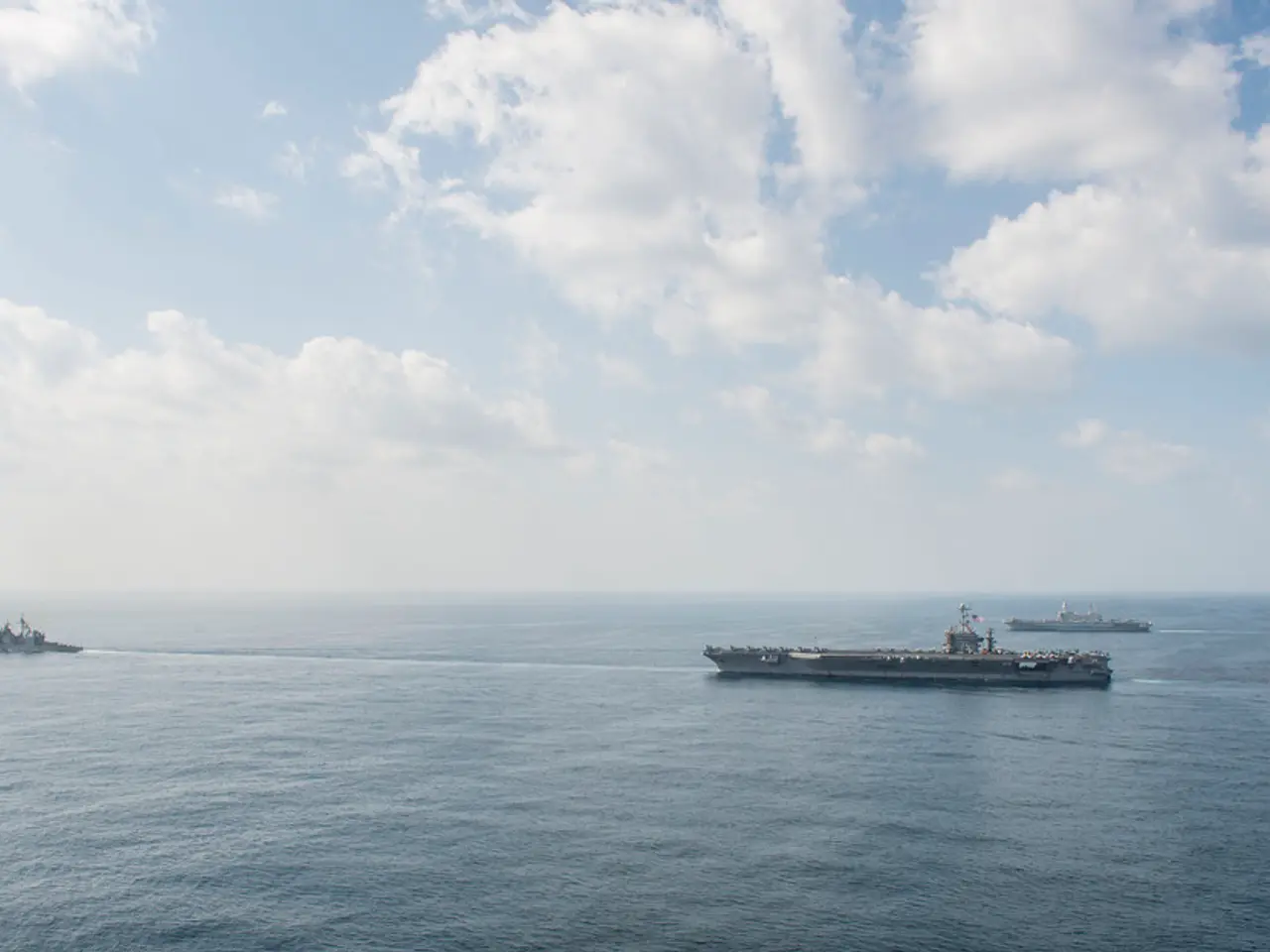Hurricane formation of Tropical Storm Erin expected this week, according to meteorologists
Tropical Storm Erin Intensifies in the Atlantic, Poses Threat to Coastal Areas
Tropical Storm Erin, the latest storm in the 2025 Atlantic hurricane season, has rapidly intensified and is now a powerful Category 2 hurricane with sustained winds near 105 mph. The storm is currently moving northwest and is expected to pass between Bermuda and the U.S. East Coast, posing significant threats to coastal areas.
Erin was first detected in the eastern tropical Atlantic Ocean on Monday, and by the afternoon, it was about 430 miles west-northwest of the Cabo Verde Islands. Forecasters predict that Tropical Storm Erin could reach hurricane intensity by the latter part of the week.
The storm is currently moving westward at 20 mph, and it is expected to continue on its westward path for several days. As Erin moves northward, it is expected to generate large waves, life-threatening surf, rip currents, and risk of coastal flooding, particularly in vulnerable regions like North Carolina's Outer Banks where evacuation orders have been issued.
While direct landfall is not expected, heavy rain and tropical storm conditions have already affected coastal areas, including Puerto Rico, the Turks and Caicos, the Bahamas, and segments of the U.S. Atlantic coast. The rapid intensification of Erin was influenced by unusually warm sea surface temperatures and favorable environmental conditions, which have been exacerbated by human-driven climate change warming the oceans and atmosphere.
Climate change also contributes to more intense rainfall during tropical cyclones, further elevating inland flood hazards alongside storm surge dangers. The storm's powerful winds and waves, combined with elevated average sea levels (about half a foot higher than a few decades ago), increase coastal erosion and flooding risks.
Meanwhile, Hurricane Henriette, a Category 1 storm in the central Pacific, is currently located about 595 miles northwest of Honolulu. Henriette's maximum sustained winds are currently 85 mph, and it is expected to retain hurricane status for another day or two before weakening. No coastal watches or warnings are in effect for either storm.
Elsewhere, the remnants of onetime Tropical Storm Ivo have degenerated in the Pacific, posing no threat to land. The location of the Mendenhall Glacier flood is in Alaska's Juneau region, where some residents were urged to evacuate due to floodwater release from the glacier.
[1] National Hurricane Center: Tropical Storm Erin Advisory 11 [2] National Oceanic and Atmospheric Administration: Tropical Storm Erin Rapidly Intensifies [3] Climate Central: Tropical Storm Erin and Climate Change [4] National Weather Service: Erin Threatens U.S. East Coast with Hazardous Surf, Coastal Flooding, and Evacuation Orders
The rapid intensification of Tropical Storm Erin, as we witness, is not merely a natural occurrence but is also influenced by the warming oceans and atmosphere due to human-driven climate change, making it a significant concern for environmental scientists. As the storm progresses, it could generate large waves, life-threatening surf, and risk of coastal flooding, all of which are crucial factors for weather forecasters to study and predict.








